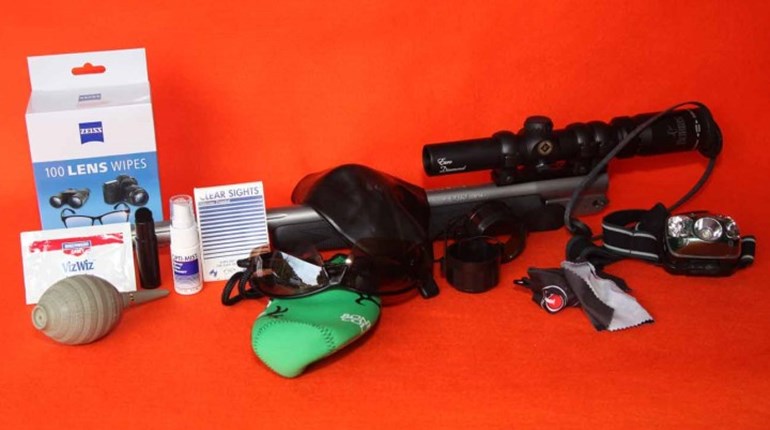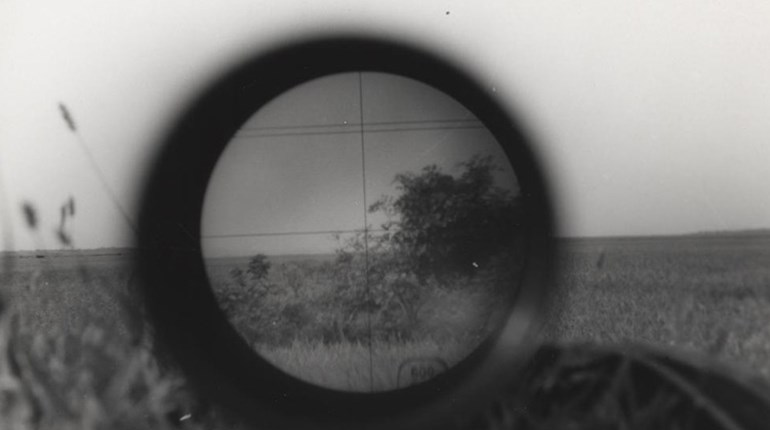
The world is so full of binoculars these days the choices become bewildering, especially since most hunters can’t afford to spend more than $2,000 on a super-binocular. Luckily, the quality of moderately priced binoculars keeps improving, and a good example is the new, made-in-America Trijicon HD 8x42.
Most hunters immediately look through a new binocular, but after having used hundreds over the decades my first test is overall feel. This may seem odd, but even the finest optics on earth aren’t all that useful when the binocular goes out of focus every time you let it hang from your neck, or the hinge between the barrels is so loose you must constantly readjust the angle to maintain a full field of view. The focus adjustment should also be slack-free, but not so “touchy” it’s impossible to quickly readjust when an animal appears.
The Trijicon got off to a very good start. It’s a solid-feeling roof-prism model with a “piano-style” hinge about a third of the barrels’ length, which proved tight enough to require some effort to bend. When adjusted to its extremes, the distance between the exit pupils ranged from 55mm to 78mm, slightly more than published specifications and sufficient for 99 percent of adult men and women.
The balance point was right at my thumbs on the underside of the binocular, where the rubber armor on each barrel has a raised ridge for a better grip. (We actually hold full-sized binoculars primarily with our thumbs and palms, not our fingers.) The 8x42 weighed 25 ounces on an accurate balance scale, a good compromise between portability and steadiness. (Trijicon also offers a 10x42mm version that weighs about the same.)
By coincidence, Montana’s spring black bear season had just opened. It’s illegal to use bait or dogs, so the standard method is to glass greened-up areas where a hungry bear might graze—an excellent test for a hunting binocular. No bears showed up (not unusual when the season opens in mid-April) but there was plenty of other scenery to look at, including a small herd of elk. I noticed one of them had furry nubs between its ears.
The center focus dial worked smoothly, but didn’t have any slack and stayed in place even when hiking from one glassing point to another. The diopter adjustment on the right eyepiece also proved stable. This eyeglass wearer appreciated the twist-out eyecups that include a firm stop at mid-point, allowing for a wide range of eye relief. At 22mm, the maximum eye relief is longer than average. Even after hours of glassing there wasn’t any eyestrain, and the view stayed plenty bright during the last hour of legal light, with minimal flare even when glassing near the setting sun. Color rendition appeared to be spot-on.
The next evening I performed a more formal optics test at home, using a Leica 8/12x42mm Duovid as a comparison, set on 8X to level the field. Over several years of hunting, the Duovid’s optics have proven to hang right in there with any binocular in the world, the reason it’s my standard test-glass for both 8X and 12X binoculars with 40-42mm objective lenses.
I stacked the Leica on top of the Trijicon, so the views of both could be quickly compared when looking at the same objects. Both binoculars showed a slight amount of “edge fuzz,” which occurs in all binoculars but is minimal in really good binoculars. The edge fuzz in the Trijicon appeared to be just as limited as in the Leica.
As the light dimmed around sunset, the comparison included viewing areas of light and shadow, some containing various items with words printed on them. Eventually the Leica proved slightly brighter, not unexpected since it retails for almost four times as much as the Trijicon. But the difference wasn’t vast, and just as important the view through the Trijicon remained sharp as long as details were visible. Even some very good binoculars lose that sharp edge after the sun sets.
One minor technical note: The HD in the name doesn’t have any specific optical meaning, unlike ED which stands for “extra-low dispersion” and refers to specific kinds of glass. HD is simply short for “high definition,” a relative term. However, the Trijicon features fluoride lenses, which reduce color aberration, one reason the color rendition appeared spot-on.
Like most modern roof-prism binoculars, the Trijicon is sealed and nitrogen-purged to remove atmospheric moisture. After being frozen overnight at zero degrees Fahrenheit, the binocular didn’t leak when submerged in hot water.
There’s a tripod adaptor at the front end of the hinge, covered by a plastic cap, and the binocular comes field-ready with a carrying harness and lens covers. With a real-world price of around $700, the Trijicon HD 8x42 is an excellent value in a hunting binocular.
Technical Specifications:
• Type: roof-prism binocular
• Magnification: 8X
• Objective Lens Diameter: 42mm
• Focusing Range: 9.8'-infinity
• Eye Relief: 22mm
• Exit Pupil: 5.25mm
• Field of View @ 1,000 Yds: 384'
• Coatings: fully multi-coated
• Dimensions: length 6.1"; width 5.2"; weight 24.7 ozs.
• Construction: magnesium frame with gray rubber armor; nitrogen filled; waterproof
• Accessories: shoulder harness, lens covers, microfiber carrying bag and lens cloth
• MSRP: $799



































